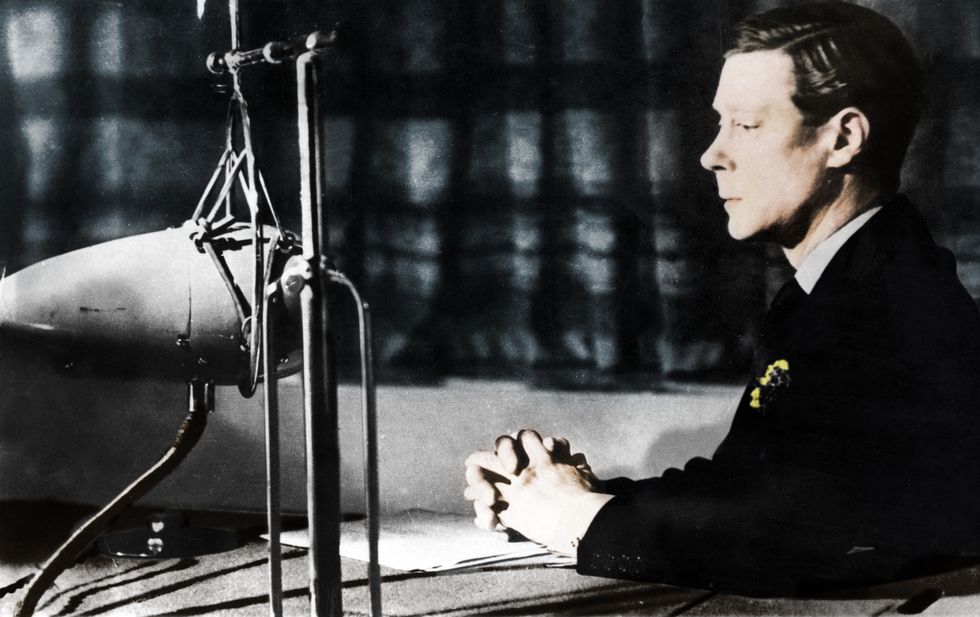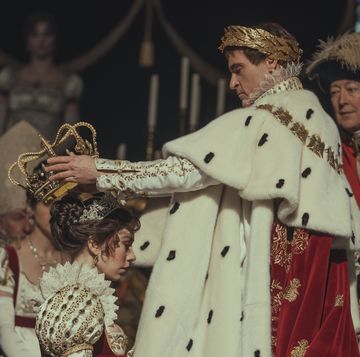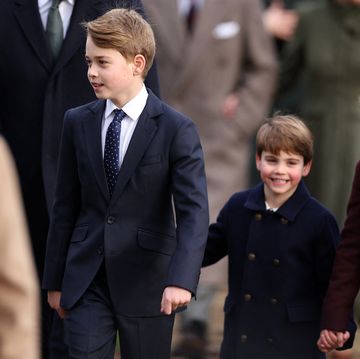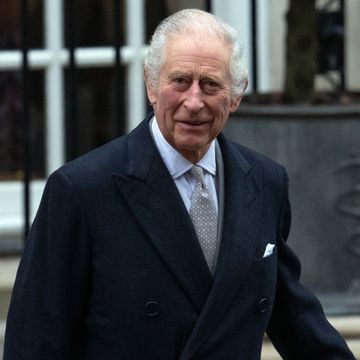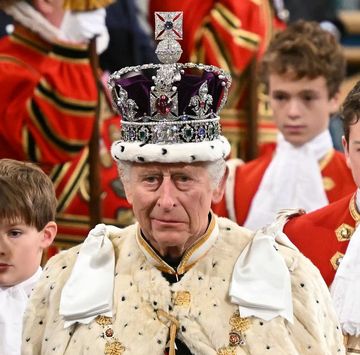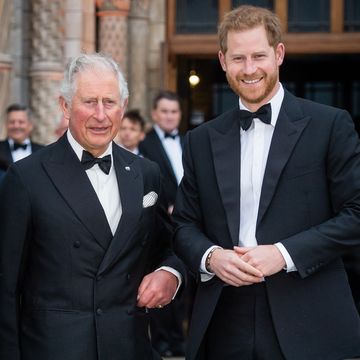On December 11, 1936, King Edward VIII of the United Kingdom addressed his subjects via a radio announcement that was expected and still shocking.
Noting that he had served out his royal duties and that he now declared his allegiance to his younger brother and soon-to-be King George VI, Edward attempted to explain why he was becoming the first British monarch to abdicate the throne.
"You must believe me when I tell you that I have found it impossible to carry the heavy burden of responsibility and to discharge my duties as king as I would wish to do without the help and support of the woman I love," he stated, referring to the religious and cultural obstacles in the way of his marrying his twice-divorced American lover, Wallis Simpson.
He left the country a few hours later, ending a 325-day reign that brought the storied British monarchy to a crossroads. Although a constitutional crisis was avoided, and the ex-king was now free to marry as he wanted, the ordeal guaranteed that the names of Edward and Wallis would be forever linked in infamy.
Edward enjoyed life as a prince but dreaded becoming king
Born in 1894 as the oldest son of George, Duke of York, Edward became heir to the throne when his father was crowned King George V in May 1910 and was formally invested as Prince of Wales the following summer.
As a young man, Edward emerged as one of the most popular members of the royal family. He had served in the Great War, albeit off the front lines, and took extensive tours of the Commonwealth on behalf of the Crown. He also embodied the persona of a handsome, charismatic prince, and enjoyed the social and sexual spoils of his charmed existence.
Behind the scenes, however, aides questioned whether the prince had the focus and drive to rise to the responsibilities of being king. Edward also privately expressed dread at the thought, as he knew he was cut from a different cloth than his traditionalist father. He took to spending more time at Fort Belvedere, a country house southeast of London, where he could while away the hours in his garden and entertain friends from high society.
He was smitten with Simpson's independence and wit
The prince met Simpson at the house of friends in early 1931. A few years removed from her divorce from U.S. Navy pilot Earl Winfield Spencer, she had resettled in London with her second husband, maritime broker Ernest Simpson.
By his own account, the first meeting between the future lovebirds was wholly unremarkable: Hampered by a cold, Edward wrote in his memoir, "she was not feeling or looking her best," and their "stilted" conversation turned to the dreaded topic of the weather.
However, their social circles brought them together again, and by the time Simpson was presented to the court later that year, the prince found himself "struck by the grace of her carriage and the dignity of her movements," adding, "I looked upon her as the most independent woman I had ever met, and presently the hope formed that one day I might be able to share my life with her."
Indeed, while Simpson wasn't considered a standard beauty, she had a quick wit and an undeniable magnetism, and Edward became obsessed with this worldly woman who was unafraid to challenge his whims. On her end, here was the dashing Prince of Wales, the most eligible bachelor in the world, making her the center of his royal attention and Simpson was swept up in the romantic intrigue.
By 1934, after the prince's regular mistress departed on an extended trip, Edward began foregoing the usual airs of secrecy regarding their relationship. They vacationed together that summer, without her husband, and the following year Wallis began accompanying the prince to royal events.
George V and Queen Mary were not happy with the presence of "that woman," as Simpson was derisively known, but virtually everyone connected to the prince seemed to believe that his infatuation with the American would eventually pass, not grasping that he was determined to make her his wife.
Edward insisted on the marriage despite the advice of his prime minister
With the death of George V on January 20, 1936, the call to duty arrived for Edward. He immediately broke with tradition by watching the proclamation of his own accession, with Simpson by his side, and soon became the first British monarch to fly in a plane when he traveled to London for his Accession Council.
As feared by royal aides, Edward showed little interest in any sort of day-to-day governorship. He was mainly preoccupied with marrying Simpson, and from her husband, at least, there was no pushback, as the businessman agreed to let the king have his way.
Convincing the Church of England and the rest of the government was another story. The Church would not marry a divorcée with a living ex-husband — let alone two — and while the king could seek a civil ceremony, the act would place him at odds with his standing as head of the Church.
Around the time Simpson was granted a preliminary divorce in October 1936, Prime Minister Stanley Baldwin finally confronted Edward about the severity of the situation. Over several meetings, he expressed his belief that the Edward-Wallis marriage would not be supported by the government or the British people and explained why Parliament, as representative of the people, could determine who was suitable to be queen.
Edward proposed a morganatic marriage, in which Simpson would not receive a royal title, but this was rejected. So, too, was Edward's request to make his case to his subjects by way of a radio address.
With no path for compromise, Edward informed Baldwin on December 5 that he would abdicate. A bill was introduced in the House of Commons on December 10, and two days later the Declaration of Abdication Act went into effect, formally freeing the former king of the "heavy burden" he spoke of.
On June 3, 1937, Edward and Simpson were married at the Château de Candé in France's Loire Valley, by the one royal chaplain who agreed to perform the service.
Edward and Simpson lived with the repercussions of his decision
Now known as the Duke and Duchess of Windsor, Edward and Simpson spent much of their remaining years in France, at odds with the British royal family. They were shipped off to serve as governor and first lady of the Bahamas through World War II, narrowly avoiding capture by Nazi agents.
With George VI enduring a bout of poor health in the late 1940s, royal insiders reportedly hatched a plan to have Edward reinstalled as regent over the young heir, George's daughter Elizabeth, should the king fail to recover. However, Edward again showed little drive to reclaim the throne, and the moment passed. He attended the funerals for his brother in 1952 and his mother in 1953, but was relegated to watching the June 1953 coronation of Queen Elizabeth on television, and waited 12 more years until earning an invite to another royal ceremony.
Along with harboring resentment toward her husband's family, Simpson was said to have focused her ire on Edward, the man who took her away from her happy London life and rendered her an object of scorn. But they remained together and lived out their lives as lesser celebrities until Edward passed away in 1972. Simpson followed in 1986 and was interred next to her husband at the Royal Burial Grounds adjoining Windsor Castle.
Ultimately the duke got his way, which was to wed the woman who charmed her way into his life in the early 1930s, but the question remains: Was his abdication truly an act of love, as he claimed? Or did he insist on a forbidden marriage because he knew it was the one way out of the kingdom he never wanted?
The public can ponder the evidence, left behind in memoirs and letters, but the final answer, it seems, lies with two of the more infamous occupants of the Royal Burial Ground.

